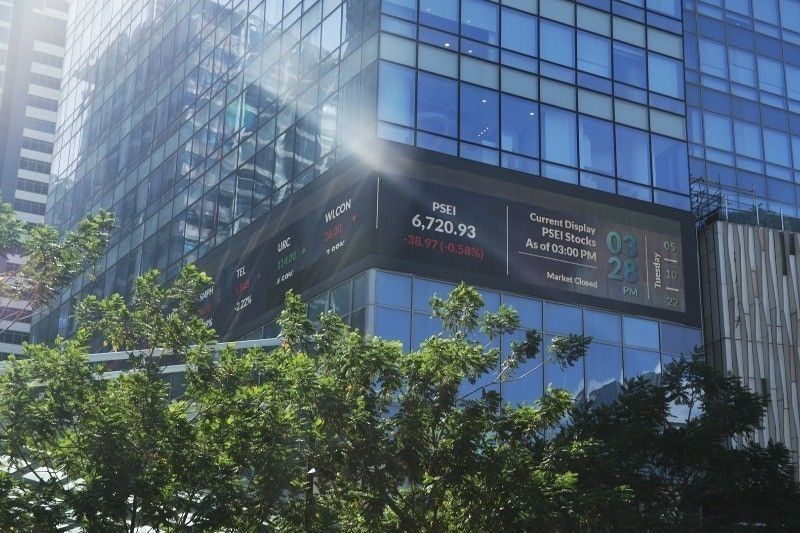Historically low valuation
The Philippine stock market bloodbath over the past two years saw the PSEi plummet from 7,122.6 on the last trading day of 2021 to 6,566.4 on the last trading day of 2022 for a 7.8 percent annual retreat and slide even further in 2023 to close at 6,450.0 on the last trading day of the […]


The Philippine stock market bloodbath over the past two years saw the PSEi plummet from 7,122.6 on the last trading day of 2021 to 6,566.4 on the last trading day of 2022 for a 7.8 percent annual retreat and slide even further in 2023 to close at 6,450.0 on the last trading day of the year. In terms of valuation, the PSEi’s 2023 year-end 12.9x price-to-earnings (P/E) ratio does not fare well when compared against its past performance in prior years. In fact, a PSEi P/E ratio this low has not been seen since the global financial crisis, when a P/E ratio of 12.5x at year-end 2008 was recorded.
Inverse Correlation Between Stocks and Interest Rates
It would admittedly seem very puzzling why the PSEi is currently recording depressed valuations similar to the time of a worst-case scenario black swan economic crisis when the global economy is in a much healthier state today. However, a confluence of extreme record-breaking economic numbers, which have not been present since the global financial crisis of 2008 as well, have suddenly crept up. In January 2023, inflation peaked at 8.7 percent, which was the country’s highest inflation figure since 2008. To address persistent red-hot inflation, the Bangko Sentral raised the key policy rate to 6.5 percent, a level which has not been seen since 2008 as well. Although the elevated 6.5 percent interest rate figure still remains, the solution to subdue inflation has been very effective, as inflation has since cooled down.
The sensitivity and aversion of the stock market to high interest rates can be explained by informed yield-seeking investors choosing to place their money in fixed income instruments that guarantee predetermined returns rather than in stocks whose movement is largely unpredictable and whose value may erode at any time. In addition to this, high interest rates translate into high interest expenses that significantly eat into companies’ earnings and, as a result, make stocks unattractive to purchase.
To illustrate further, the PSEi recorded its highest ever close at the 9,058.6 mark with a very high P/E ratio of 24.3x in January 2018 on the back of a very low key policy rate of 3 percent. The goldilocks period was short-lived, though, with the index closing much lower at 7,466.0 by the end of the very same year. The culprit behind the stark decline was no other than the key policy rate being increased to 4.75 percent to address stubborn inflation brought about by the excesses of the US-China trade war.
Very low interest rates also aided in keeping the stock market afloat during the COVID-19 pandemic when the Philippines spiraled into an economic recession. The shrinking economy and loss-making companies did not stop the PSEi from recording a 24.4x P/E ratio at year-end 2020 and a 20.8x P/E ratio at year-end 2021 due to the maintenance of a very low two percent key policy rate throughout both years.
Blending the Past, Present, and Future
While downside risks still admittedly remain in the form of inflation, El Niño, and the Israel-Hamas conflict, the benefits of buying undervalued stocks at current prices already far outweigh any potential fallout from the full-blown occurrence of such risks. Increasing further the attractiveness of the stock market is the PSE’s introduction of innovative products and measures, particularly short selling, VWAP trading, and the reduction of the stock transaction tax from 0.6 percent to 0.1 percent in collaboration with the Department of Finance.
Any long-term uptrend in the stock market, however, could only be made sustainable with interest rate cuts that should entice investors to shift funds from fixed income to equities. In such a scenario, the Philippines, as the fastest growing economy in Southeast Asia, would definitely be a top-of-mind destination for foreign investors who will be leading the charge in lifting up the value of the country’s stock market.
Having identified many similarities between the economic conditions existing during the global financial crisis and today, the aftermath of the crisis naturally presents the best illustration to envision the impact of interest rate cuts on the stock market’s subsequent direction. When the Bangko Sentral started cutting interest rates in 2009, the valuation of the PSEi took off and registered much higher P/E ratios in the years that followed, ranging from the high teens up to the low twenties, until just before the recent decline in stock prices which started in 2022. Those who bought Philippine stocks at distressed valuations in 2008 were greatly rewarded in the succeeding years.
Fast forward to today, and with the Bangko Sentral signaling interest rate cuts in the latter part of the year, the stock market finds itself before an inflection point similar to that of 2009. Stock market investors who come in at current levels have a reason to be excited because, as the old adage goes, history repeats itself.
* * *
This was co-written by Eduardo Francisco and Andrew Poblete. Mr. Francisco is president of BDO Capital & Investment Corp. and vice chairperson of the Shareholders’ Association of the Philippines (SharePHIL). Mr. Poblete is an associate in BDO Capital.
To learn more about SharePHIL, visit https://bit.ly/m/sharephil














